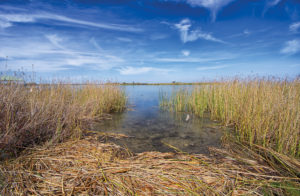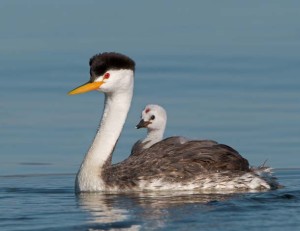The nearly vertical cliffs on the western side of Alcatraz Island serve as a nursery for several species of seabirds. These cliffs are the Bay’s only breeding site for Brandt’s and pelagic cormorants. In 1991, when PRBO Conservation Science began monitoring birds on the island, they counted only three breeding pairs of Brandt’s. In 2007, 1,078 pairs nested here. The birds moved into the Bay from the Farallon Islands after the population of their preferred prey–rockfish–crashed. The cormorants that nest at Alactraz and other shoreline locations are now hunting anchovies closer to land. For each of the last three years, surveys have found 1,000 pairs of Western gulls, but fewer than 20 pairs each of pelagic cormorants, California gulls, and pigeon guillemots, along with a lone pair of black oystercatchers.
The breeding season extends from February through fledging in September. During those seven months, disturbance can prove harmful or fatal to the chicks. If a bird is frightened enough to abandon its nest, even temporarily, another species may swoop in and steal eggs or carry off chicks.
The birds contend with disturbances from land, air, and sea. But for all the visitor traffic, planes overhead, and motorcraft passing by, the nesting birds tend to be most disturbed by the approach of a kayak.
PRBO scientists, who have been monitoring disturbances here since 1999, have observed reactions in the birds ranging from simply looking at the boats to flushing from their nests. PRBO seabird ecologist Sara Acosta isn’t certain why kayaks and canoes cause so much distress, but she thinks it may be that the birds don’t notice the silent boats until they are close enough to make the birds feel quite threatened. Boaters of all stripes should stay at least 100 yards from shore during nesting season.
Don Kingery, a member of Bay Area Sea Kayakers, says most in the kayak community are aware of their potential to disturb wildlife and try to act appropriately. “We can plan our paddles around sensitive areas,” he says, “but wildlife can’t plan their lives around us.”
To volunteer for public education efforts, contact Sarah Acosta at sacosta@prbo.org. To learn more about seabird conservation go to www.prbo.org/seabirdaware.

.jpg)


-300x190.jpg)
-300x225.jpg)